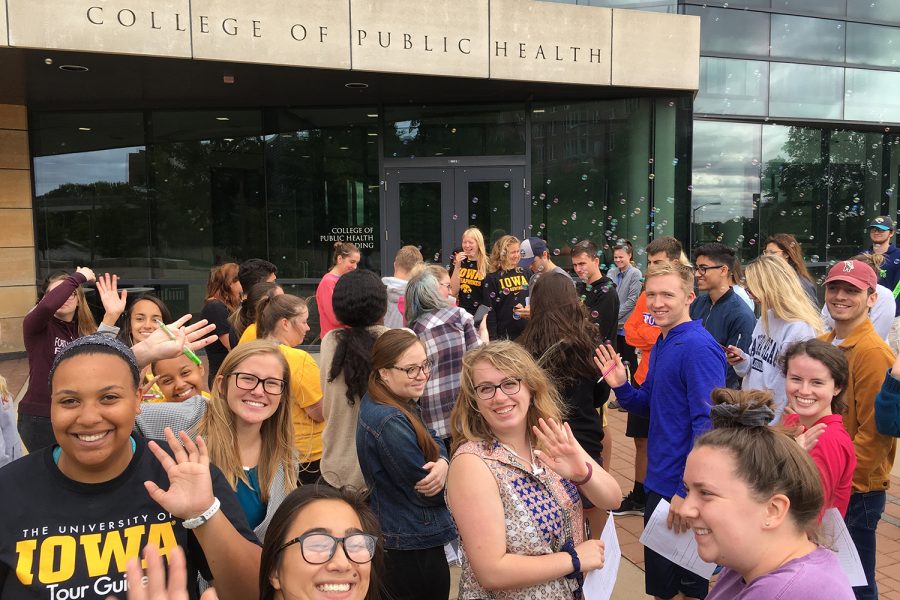Iowa professor finds new way to teach diseases
With the rise of popularity in such films as Contagion, a UI professor has made his class on diseases more interactive to appeal to a popular topic among students.
April 28, 2019
For most students, University of Iowa classes may include just a textbook, a professor, and some homework or readings. For UI Associate Professor Matt Nonnenmann, learning extends outside the traditional classroom setting.
With using a hashtag for students to engage on their social media showing how many objects can contract disease, demonstrating contagious disease through bubble machines blowing at high volumes, or allowing students to wear full preventive suits, the hands-on experiences Nonnenmann gives students have produced successful classroom experiences, he said.
The class is offered in fall semester every year, and it has grown from 30 students in the fall of 2017 to 75 this academic year. It will open this fall to 125 students.
“The core of the class is based on infectious-disease transmission,” Nonnenman said. “How that disease is transmitted, how you can assess transmission, and how you can protect yourself is covered in the class. We do activities in classes that involve how these things work.”
RELATED: UIHC exercise simulates hazardous disease response
Students look at a variety of public-health topics, Nonnenman said, including sexually transmitted diseases, one of the most common UI Student Health deals with every year.
“After we’re done with the whole process, I tell my class that what we just did is public health,” Nonnenman said. “We identified a group that is at risk for particular diseases or undesirable health outcomes and then did an activity to inform them of what the disease is, how to prevent an outcome, and where to go for help. That is the first example of the practice of public health.”
After various introductions of public-health scenarios, the class focuses on infectious-disease categories and how they are contained. The class also watches the 1995 film Outbreak.
“As the semester progresses, we talk about zoonotic diseases — diseases that came from animals — such as HIV, plague, Ebola, and more,” Nonnenmann said. “We start at the ‘patient zero’ of who ultimately started these diseases. How did they contract this disease, and where can we track it back are questions we ask.”
Students may also don all of the protective equipment doctors use when treating an Ebola patient and learn how to properly take off the equipment, Nonnenmann said.
The different activities and environments allows the students to engage and enjoy the course, he said.
UI student Bianca Celozzi, majoring in health and human physiology, said she’s glad she took the course her freshman year.
“I personally really enjoyed this course,” she said. “We learned all about diseases, how they spread, and how to advocate. Since I am a health-related major, I was able to apply it to other things.”
Public-health major Luke Sampson said he heard about the class as an elective and it intrigued him.
“I took it on a whim,” he said. “Going through the course, I just really started to enjoy it and the way Professor Nonnenmann taught it.”





















